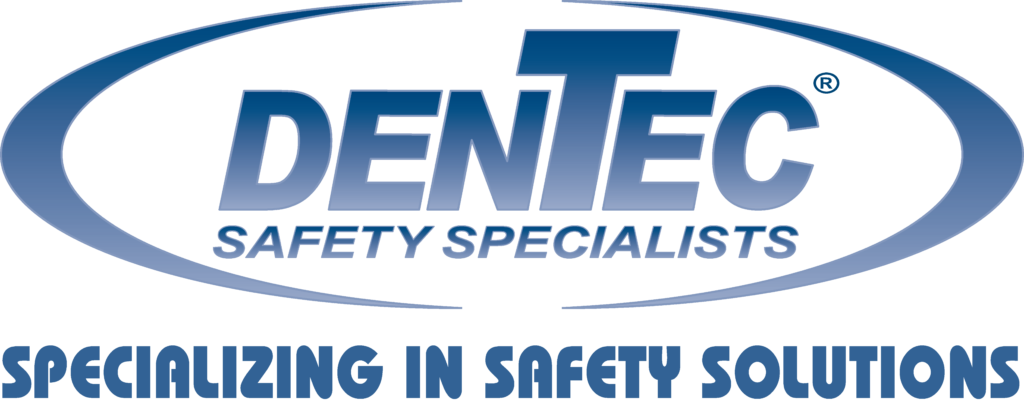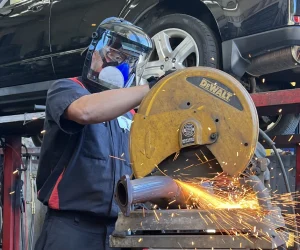In a world filled with noise, protecting our hearing has become paramount. Whether you’re working in a noisy industrial setting or attending a loud concert, wearing proper hearing protection is crucial. However, it’s not enough to simply put on earplugs or earmuffs; correct insertion is essential for optimal effectiveness.
To ensure you are safeguarding your precious hearing with precision, we put together the following step-by-step guide to properly wearing hearing protection.
Choosing the Right Type of Hearing Protection
People often think that the higher the noise reduction hearing protection offers, the better. However, it is important to select a hearing protector that reduces damaging sounds at the ear while still allowing the user to communicate with coworkers. It should also enable the user to hear equipment sounds to determine if the machine or equipment they are working on is functioning properly and not broken.
When choosing the type of hearing protection equipment, you must consider not only the loudness of the sound measured in decibels but also the frequency of the sound. Review the attenuation data provided with all hearing protectors to help you select the right product for your application.
Understanding the Importance of Properly Wearing Ear Protection
The effectiveness of ear protection is directly linked to how well it is inserted. Improper insertion can result in gaps that allow sound to seep through, significantly reducing its effectiveness. By properly inserting ear protection, you can create a seal that blocks out harmful noise and prevents potential hearing damage.

Step-by-Step Guide to Properly Insert Hearing Protection
- Clean Your Hands: Before handling any ear protection, ensure that your hands are clean to prevent introducing dirt or bacteria into your ears. It is recommended to wash your hands thoroughly with soap and water.
- Choose the Right Ear Protection: Select the appropriate type of ear protection based on your needs. The most common options are earplugs and earmuffs. Earplugs are inserted into the ear canal, while earmuffs cover the entire ear.
- Prepare the Earplugs: If you are using earplugs made of foam material with memory, roll them between your fingers to compress them into a small cylinder shape. This makes the earplugs easier to insert into the ear canal. Most earplugs come with specific instructions on how to do this correctly.
- Insert the Earplugs: Gently pull the top of your ear up and back to open the ear canal. This helps create a clear pathway for the earplugs. Insert the earplug into the ear canal until it feels snug but not overly tight. If you are using foam-style earplugs, hold the earplug in place until it expands in the ear canal. Once you feel the earplug stabilize into position in the ear canal, release it, and it should stay in place and not back out. If it does back out, you did not hold the earplug in place long enough.
- Check the Seal for Earplugs: To ensure a proper seal, cover your ears with your hands and apply slight pressure. You should notice a significant reduction in ambient noise. If you feel the earplug slipping out, remove and reinsert it until you achieve a proper seal.
- Using Earmuffs: When using earmuffs, position them over your ears, ensuring that the ear cups completely cover each ear. Adjust the headband for a secure and comfortable fit. Verify that there are no gaps between the earmuffs and your head, as these can compromise noise reduction. Make sure to position the earmuff cups in the proper “as worn” position. Do not position the earmuffs horizontally if they are not designed to be worn in that direction.
- Verify the Fit and Comfort: Once you have placed the hearing protector in position, take a moment to ensure they are comfortable and fit properly. Earplugs should not cause discomfort or pain when inserted correctly, and earmuffs should provide a snug fit without excessive pressure.
Properly worn hearing protection is crucial for effective noise reduction and safeguarding your hearing. By following these steps, you can ensure that your earplugs or earmuffs create a secure seal, providing optimal protection in noisy environments. Prioritize your hearing health and enjoy the benefits of a quieter, safer world.
Dentec Safety is a leading manufacturer and distributor of safety products in the North America since 2004. Dentec Safety is dedicated to providing the highest quality safety products and solutions delivering enhanced value and comfort. Our expertise from decades of experience in Industrial Safety and our innovative design technologies have solidified us as thought leaders in the field. Protection and comfort are at the core of everything we do at Dentec. As a leading manufacturer of Safety Solutions, it is our mission to help organizations do the right thing, keep their employees safe and exceed Industry Health & Safety Standard.








